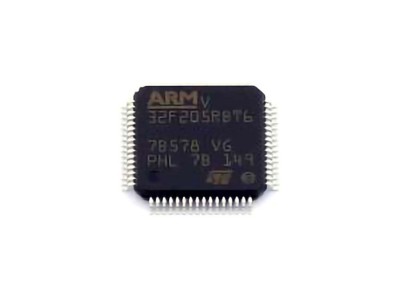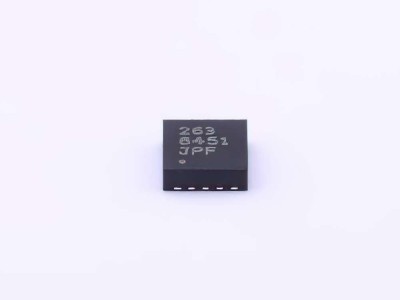
The A4988SETTR-T is a popular stepper motor driver IC used in a wide range of applications requiring precise motor control. This article delves into the practical applications and debugging techniques for integrating the A4988SETTR-T in stepper motor drive circuits. It offers insights into how the driver operates, common issues that arise, and how to troubleshoot effectively. Whether you're designing a robotics system, CNC machine, or 3D printer, this guide will provide invaluable expertise to maximize the performance of your stepper motor setup.
A4988SETTR-T, stepper motor driver, stepper motor control, debugging, stepper motor circuit, A4988 troubleshooting, motor driver IC, robotics, motor control, stepper motor applications.
Understanding the A4988SETTR-T and Its Application in Stepper Motor Circuits
The A4988SETTR-T is a versatile and highly efficient stepper motor driver IC, popular in various precision applications like 3D printers, CNC machines, robotics, and other motion-control systems. It integrates advanced features to handle stepper motors with ease, offering smooth and reliable control. Understanding its operation and configuration is essential for any engineer or hobbyist working on motion control systems.
Overview of the A4988SETTR-T Stepper Motor Driver IC
The A4988SETTR-T is a microstepping driver that can drive bipolar stepper motors with adjustable current settings. This IC is built to handle high current loads, typically from 2A per phase, which is common in many stepper motors used in consumer and industrial applications. It can achieve microstepping up to 1/16-step resolution, which allows for smoother and quieter operation compared to traditional full-step or half-step driving.
A key feature of the A4988SETTR-T is its ability to control the current supplied to the stepper motor, ensuring efficient and precise movement. The driver uses a technique called chopper drive to regulate current, which reduces the heat generated and prevents damage to the motor or driver. This current regulation is crucial for applications where the motor’s performance needs to be finely tuned to specific requirements.
Typical Applications of the A4988SETTR-T
The versatility of the A4988SETTR-T makes it suitable for a wide variety of applications:
3D Printing: One of the most well-known uses of the A4988 driver is in 3D printers, where it drives the stepper motors responsible for the movement of the print bed and extruder. The precision and microstepping capabilities ensure high accuracy in layer deposition and overall print quality.
CNC Machines: Computer numerical control (CNC) machines require fine control over stepper motors for operations like milling, drilling, and routing. The A4988 allows for precise movement, essential for machining complex parts with tight tolerances.
Robotics: Stepper motors are widely used in robotics for precise control of movement. The A4988 enables smooth and accurate motion control in robotic arms, mobile robots, and other automation systems.
Automated Testing Equipment: In automated test setups, precise and reliable movement is often required to position instruments, probes, or other components. The A4988SETTR-T ensures that the stepper motors perform reliably in these demanding environments.
How the A4988SETTR-T Works
At the heart of the A4988SETTR-T’s functionality is its ability to drive stepper motors using current-controlled switching. The stepper motor's windings are energized in a precise sequence to produce the desired rotation. The A4988 allows for a range of microstepping configurations, from full-step to 1/16-step, which helps achieve smoother and more precise motor movements.
The IC is typically used in conjunction with a microcontroller (such as an Arduino or Raspberry Pi), which provides the control signals for step, direction, and enable inputs. The A4988 takes these inputs and drives the motor accordingly, controlling the current and the timing of each step.
The Vref pin is crucial for adjusting the current limit to match the motor's specifications. Proper calibration of this pin ensures that the motor operates efficiently and does not overheat, which is especially important in applications requiring continuous or high-load operation.
Basic Circuit Design Using the A4988SETTR-T
Designing a circuit using the A4988SETTR-T typically involves several key components:
Power Supply: A stable and sufficient power supply is critical for reliable operation. The A4988 can operate with a voltage range from 8V to 35V, with current limits determined by the motor’s specifications.
Microcontroller Interface: The microcontroller (like Arduino or similar) provides the step, direction, and enable signals to the A4988. These signals control the movement of the motor.
Motor: A bipolar stepper motor is used to convert Electrical signals into mechanical motion.
Decoupling Capacitors : It’s crucial to use proper decoupling capacitor s across the power supply lines to filter out noise and prevent voltage spikes, ensuring stable operation.
Current Sense Resistors : These resistors are used to set the current limit on the motor, which is controlled by adjusting the Vref voltage.
With these components in place, the A4988SETTR-T can drive the stepper motor in a controlled and precise manner, ensuring smooth movement with minimal noise.
Debugging Common Issues in A4988SETTR-T Stepper Motor Circuits
While the A4988SETTR-T is a highly reliable stepper motor driver, issues can arise during setup or operation. Understanding these common problems and knowing how to troubleshoot effectively is key to optimizing your motor control system. In this section, we will explore some of the most frequent issues and provide practical debugging tips.
1. Motor Not Moving or Stalling
One of the most common issues encountered when using the A4988 is when the stepper motor fails to move or stalls during operation. Several factors could contribute to this problem:
Incorrect Wiring: Ensure that the stepper motor is correctly wired to the A4988. Double-check the connections for the motor’s A and B coils, as well as the power supply and control signals from the microcontroller. Incorrect wiring can prevent the motor from receiving the proper signals and cause it to fail to move.
Insufficient Current: If the motor is not receiving enough current, it may fail to produce sufficient torque to rotate. Check the Vref setting, as it determines the current limit. Use a multimeter to measure the voltage at the Vref pin, ensuring it’s calibrated according to the motor’s specifications.
Power Supply Issues: If the power supply voltage is too low or unstable, the A4988 may not function correctly. Verify that the power supply voltage is within the recommended range (8V to 35V) and can provide enough current for the motor and driver.
Overheating: Overheating of the A4988SETTR-T can lead to thermal shutdown, preventing the motor from moving. Ensure adequate heat sinking and ventilation to keep the driver cool. If necessary, use a larger heat sink or active cooling to dissipate heat.
2. Motor Shaking or Vibrating
Stepper motors driven by the A4988 are generally known for smooth motion, but sometimes they may exhibit shaking or vibrating during operation. This can occur due to several factors:
Incorrect Microstepping Configuration: The A4988 supports various microstepping modes, and selecting the wrong mode can result in undesirable motion characteristics. Verify that the MS1, MS2, and MS3 pins are set to the correct values for the desired microstepping resolution.
Vref Calibration: Incorrect calibration of the Vref pin can lead to issues like excessive current being supplied to the motor or insufficient current, causing vibrations. Adjust the Vref voltage to match the motor’s rated current, and ensure it's within the recommended range.
Motor Resonance: At certain speeds, stepper motors can enter a resonant frequency range where they produce vibrations. To mitigate this, try adjusting the stepping rate or using a different type of stepper motor with better damping characteristics.
3. Motor Overheating
Overheating can be a major issue in stepper motor systems, leading to thermal shutdown or reduced performance. The A4988SETTR-T is equipped with thermal overload protection, but excessive heat can still damage the components if not managed properly.
Excessive Current: If the motor is drawing more current than necessary, it will overheat. Double-check the Vref setting to ensure it is correctly set to the motor’s rated current. Also, use a lower microstepping mode to reduce current spikes during operation.
Inadequate Cooling: Stepper motor drivers like the A4988 can generate heat during continuous operation. Ensure proper heat dissipation by adding a heatsink or using active cooling solutions such as fans.
Low-Quality Power Supply: A poor-quality or underpowered power supply may cause voltage spikes or instabilities, which can lead to overheating. Use a power supply with proper ratings for both voltage and current, and ensure it’s of good quality.
4. Erratic or Inconsistent Motion
Sometimes, the stepper motor may exhibit erratic or inconsistent motion, even if the connections appear to be correct. This can occur due to issues like:
Noise or Interference: Electrical noise can cause signal interference, resulting in erratic behavior. To mitigate this, ensure proper grounding and use decoupling capacitors to filter out noise from the power supply.
Loose Connections: Loose or intermittent connections can lead to inconsistent behavior in the motor. Double-check all wiring and connectors to ensure they are securely attached.
Faulty Driver: If the A4988 itself is damaged or malfunctioning, it may lead to unpredictable motion. Consider replacing the driver IC and testing the circuit again.
In conclusion, the A4988SETTR-T is a highly capable and reliable stepper motor driver, but as with any electronic component, issues can arise. By understanding the basics of its operation, common troubleshooting steps, and using debugging techniques effectively, you can ensure your stepper motor system operates smoothly and reliably. Proper calibration, careful circuit design, and proactive troubleshooting are key to making the most of this powerful motor driver in your projects.
Partnering with an electronic components supplier sets your team up for success, ensuring the design, production, and procurement processes are quality and error-free.


